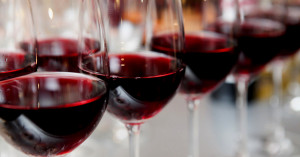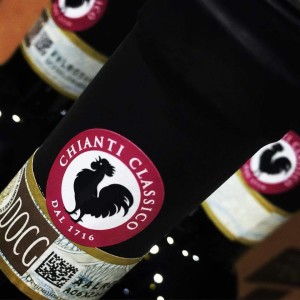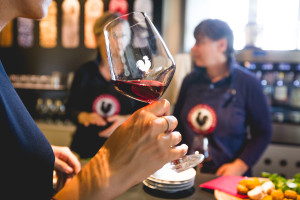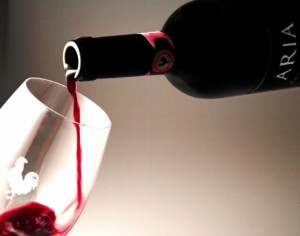Articolo disponibile anche in: Italian
Research and conjecture have speculated on the features of the 1716 wine but science is as yet unable to restore to us the flavour of Chianti produced three centuries ago.
It is however certain that it was the feather in Tuscany’s cap in the 18th century: wine production was already a tradition and its quality well-known, making it a strategic product for international trade.
We know a lot more about today’s Chianti Classico, so we can hazard some predictions about the most recent harvest. The 2016 vintage promises to be excellent, starting with the flawless quality of the grapes brought to the cellars of our Chianti estates. The grapes were healthy and nicely rich in extract thanks to the fairly regular weather conditions, which leads us to expect well-structured wines.
2016 was a generally normal year, without health issues for the vineyards. The only event to attract the growers’ attention was the lack of rain in late July during veraison, but the drought was relieved by rain in late August and early September.
Steady warm weather without peaks of excessive heat in the final month maintained the balance and helped the grapes to ripen perfectly without over-maturation.
The summer was excellent overall, with little rain and high temperatures in July and August, but above all, marked temperature variation at night, which should translate to wines with high quality aromas and acidity.
We can therefore confirm our prediction of an extremely high standard of quality for this vintage, which will particularly enhance the characteristic features of the sangiovese grape: rich extract, anthocyans, polyphenols and unique, highly focused varietal aromas.

2015 VINTAGE (Total production: 290,000 hl)
The latest vintage of Chianti Classico, 2015, was excellent thanks to the regular weather conditions and the flawless quality of the grapes. The winter was temperate with alternating cold days, and below zero temperatures on certain days. The spring was mild with medium-high temperatures favouring regular budding of the foliage.
The summer was excellent overall, with little rain and high temperatures in the months of July and August, compensated by a good day-night temperature variation.
All the phenological phases (budding, flowering, fruit-set and veraison) were perfect.
More than other years, 2015 enhanced the features of Sangiovese with unique and concentrated extract, anthocyans, polyphenols and varietal aromas.
In terms of production, the quantity was much the same as the previous year.

2014 VINTAGE (Total production: 290,000 hl)
Weather trends. It was a year of brusque changes in temperature and abundant rainfall, with brief but copious downpours alternating with windy days and below-average temperatures.
All of this made work difficult for grape growers, but those deciding to thin the vines in several stages and carefully tend them as they grew succeeded in obtaining excellent grapes.
The work done by exerts and vintners in the months prior to the harvest led to sure success in achieving high quality standards out of a quite unusual year.
Many wineries had to invest in extra labor to control the problems deriving from excessive humidity, by thinning, drying and disinfecting the areas most at risk (the low-lying vineyards). And indeed by the end of the summer the grape growers in central-northern Italy were expecting one of the toughest harvests in history.
No exception was the Chianti Classico area, where in a number of zones the wet weather was favorable to parasite infestation. The first samplings of grapes in the territory, picked in late August, were not yet fully ripened and had high acidity. Nonetheless the good weather in September and the first half of October – with summery days and cool nights – enabled the grapes to gradually but fully ripen, making it possible, in mid-October, to harvest grapes (especially the Sangiovese) capable of giving elegant and balanced wines with outstanding aromatic and acid components, perfect for subsequent maturation.
The 2014 wines have an unconventional character, with very deep color thanks to the good extractability of the anthocyanins, and with the tangible imprint of Sangiovese giving structure and harmony to the wines due to its high polyphenol content. No particular problem arose with alcoholic fermentation or, in most cases, with the malolactic one, although this has not yet terminated.
In the current maturation stage, about three months on from harvest, we can state that the new wines that will become Chianti Classico 2014 are very fragrant and aromatic, thanks also to the fact that alcohol content is not high so it does not prevail over the overall aromatic balance achieved during regular alcoholic fermentation.

2013 VINTAGE (Total production: 260.000 hl)
Seasonal progress: from the purely meteorological standpoint, in the first half of 2013 there was a lot of rain, with temperatures often below seasonal averages: a true winter, which in this year took Chianti to near-zero temperatures, was followed by a late spring and consequently late vine blossoming.
The heat that truly arrived around mid-July sped up grape ripening processes, which continued with regularity through a summer with temperatures typical for the season and a perfect September that accentuated the differences between day and night temperatures experienced during the summer and permitted very balanced grape ripening.
The work done by experts and vintners in the months prior to the harvest made for certain success in achieving high quality standards. If the initial samplings of Sangiovese grapes, true heart of Chianti Classico, had already showed a good level of sugars and the right acidity, at the end of the day we can say that in Black Rooster zones we found grape quality to be well above average, with optimal levels of polyphenol maturity in perfect balance with the acid structure of the fruit.
These parameters, together with sugar concentration not too high in the musts – as often happens in very hot, dry years – made it possible to carry out vinification processes that enhanced the grapes’ potential, Alcoholic and afterwards malolactic fermentation proceeded regularly and problem-free, showing the health of the grapes and the excellent balance of their primary noble components.
The Chianti Classico 2013 wines are very balanced between fragrances and flavors and above all well-dosed: there is equilibrium in the polyphenols, extract, tannins and glycerin so that they harmonize without any element prevailing over the others, thanks also to the non-excessive alcohol content that developed during the season.

2012 VINTAGE (Total production: 235.000 hl)
The year 2012 will be remembered in Black Rooster territory as one of late-summer dread of a truly difficult year after months of drought.
Fortunately, after this dry season and one of Chianti’s hottest summers on recent record, late August brought enough rain to ensure that even this odd summer would end in a good harvest for Chianti Classico.
The hot, dry weather until the end of August certainly did influence the amount of grapes brought to the cellar. Wine production in 2012 was some 235,000 hl, about 16% less than a year ago but, in regard to quality, optimism for a fine vintage grows with each passing month. Seasonal progress.
Although the early part of the year was normal, with cold weather and snow in January and February and a mild, rainy spring especially in April, after the early May rains a dry spell set in, not only in Black Rooster land but in most of Italy, as temperatures began to rise.
July and August featured various high-pressure systems that, whatever the mythic names given them, brought broiling heat. These systems, together with meager water reserves in the soil, slowed down grape ripening although it never came to an actual halt.
The rain in early September fortunately reactivated natural processes within the grapes and, along with a general lessening of the heat and bigger temperature changes from day to night (in any case experienced in Chianti even in the hottest months), this ensured recuperation of a situation that looked quite difficult at first, especially for the late-ripening varieties like Sangiovese.
A grape harvest under the emblem of Sangiovese. And it will be precisely the princely grape of Chianti Classico that characterizes the new vintage: in fact, thanks to its greater adaptability to harsh weather conditions, the Sangiovese stood up well to the dry heat of the summer.
The beneficial effects of the September weather guaranteed excellent ripening of the grapes, which were picked at the traditional time in Chianti Classico territory, between the end of September and early October.
From the health standpoint, the grapes reached the cellar in perfect condition thanks precisely to the high temperatures and lack of moisture that kept the usual vine infestations (downy and powdery mildews) at bay.
This helped foster correct, quick fermentation after pressing, with average alcohol content remaining at acceptable levels (at about 14° at most).
So 2012 promises very balanced wines, with excellent ratios of alcohol, acidity and polyphenols that seem to be guaranteeing mellow products, very fruity and with good but not excessive alcohol content.


